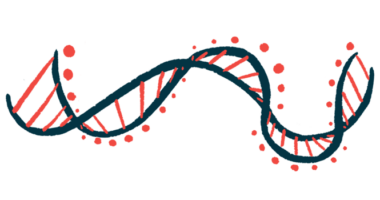Study of enzyme structure may help predict effects of DDC mutations
Scientists analyze how different regions of DDC gene affect enzymatic function

Researchers have gained new insights into the structure of the aromatic amino acid decarboxylase (AADC) enzyme — which is faulty or absent in people with AADC deficiency — that could help them interpret and predict the consequences of different disease-causing mutations.
Regions of the DDC gene code for parts of the enzyme that are important for its structural integrity, and researchers found that mutations in those regions might lead to a loss of enzymatic function that contributes to AADC deficiency.
The findings were detailed in the study “Human aromatic amino acid decarboxylase is an asymmetric and flexible enzyme: implication in AADC deficiency,” published in Protein Science.
AADC enzyme is key for production of certain critical neurotransmitters
The AADC enzyme is key for the production of certain nerve signaling chemicals, or neurotransmitters, that are critical for proper brain function. These chemicals include dopamine and serotonin, as well as the dopamine-derived neurotransmitters norepinephrine and epinephrine.
The DDC gene provides the instructions to produce AADC. In people with AADC deficiency, DDC mutations lead to too little AADC and/or a poorly working version of the protein, and not enough of these neurotransmitters are produced.
Patients experience severe motor and neurodevelopmental symptoms that are often evident in the first year of life.
Currently, researchers don’t have a good way of predicting which mutations in the DDC gene are pathogenic, or disease-causing, and whether some mutations will lead to more severe disease than others.
A way to better understand the relationship between genotype (genetic makeup) and phenotype (disease characteristics) is to learn more about the structure of the AADC enzyme, and how different regions contribute to its function.
This information can help estimate which mutations are likely to cause more severe disease based on what part of the protein they affect. In addition, that knowledge can be used to identify “appropriate precision medicine treatments,” the researchers wrote.
In the study, a research team in Italy used a range of high- and low-resolution techniques to learn more about the three-dimensional structure of the AADC enzyme in the presence and absence of a dopamine precursor.
The enzyme comprises two identical chains of amino acids, the building blocks of proteins, that are linked together. For it to be active, it needs to bind to pyridoxal phosphate, the active form of vitamin B6.
Neurotransmitter precursors bind to the enzyme’s active site, where they are converted into the final neurotransmitters.
The scientists have now shown that AADC is a long, asymmetric, and flexible molecule.
By analyzing the effects of 37 known AADC deficiency-causing mutations on the enzyme’s structure and function, they found that its structural dynamics are crucial for its activity.
Findings could help scientists predict consequences of DDC mutations
Specifically, they found that the mutations most severely affecting AADC function were located not only in DDC regions coding for enzyme domains near the active site, but also in those coding for regions far away from the active site.
These findings highlighted that the structural integrity of protein regions far away from the active site were also essential for AADC’s ability to produce dopamine and serotonin from their precursor molecules.
“AADC deficiency pathogenic variants can represent hotspots in regions relevant for structural dynamics,” the researchers wrote, adding that these findings “could represent the molecular basis for pathogenicity prediction in AADC deficiency.”
Overall, the findings could help scientists to interpret and predict the consequences of DDC mutations.
“Since no clear genotype-phenotype correlation for AADC deficiency exists until now, prediction of pathogenicity based on the affected protein region could be useful in coupling it to patients genotypes and ultimately to clinical phenotype,” the team concluded.








